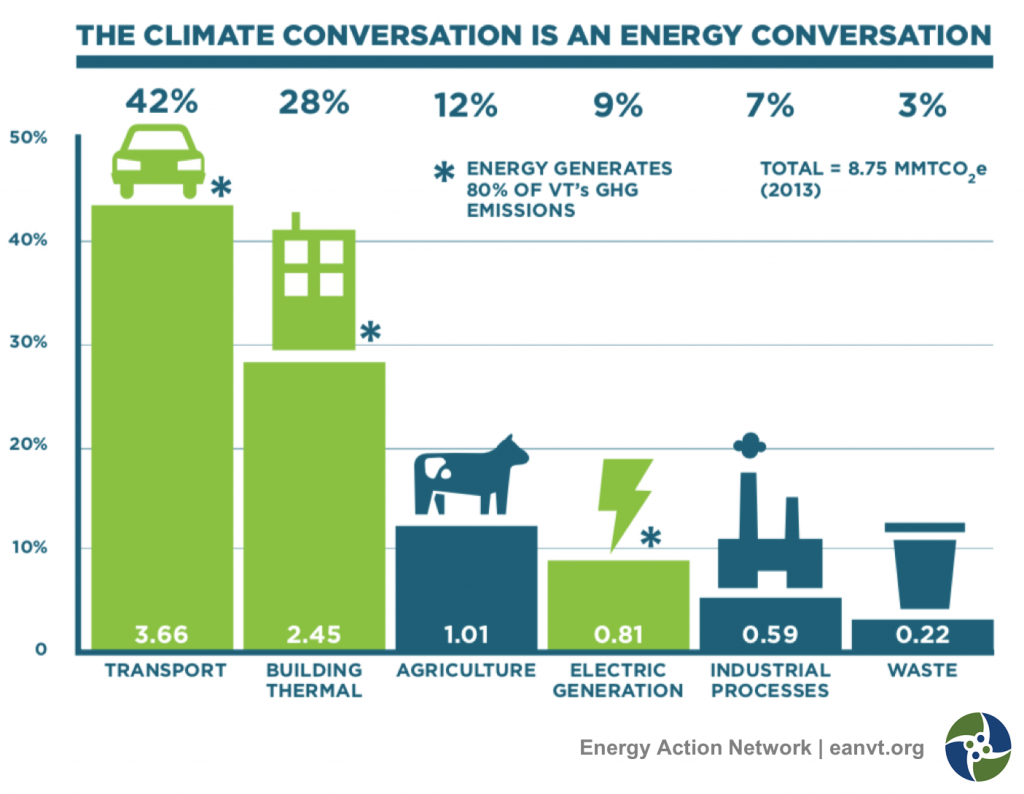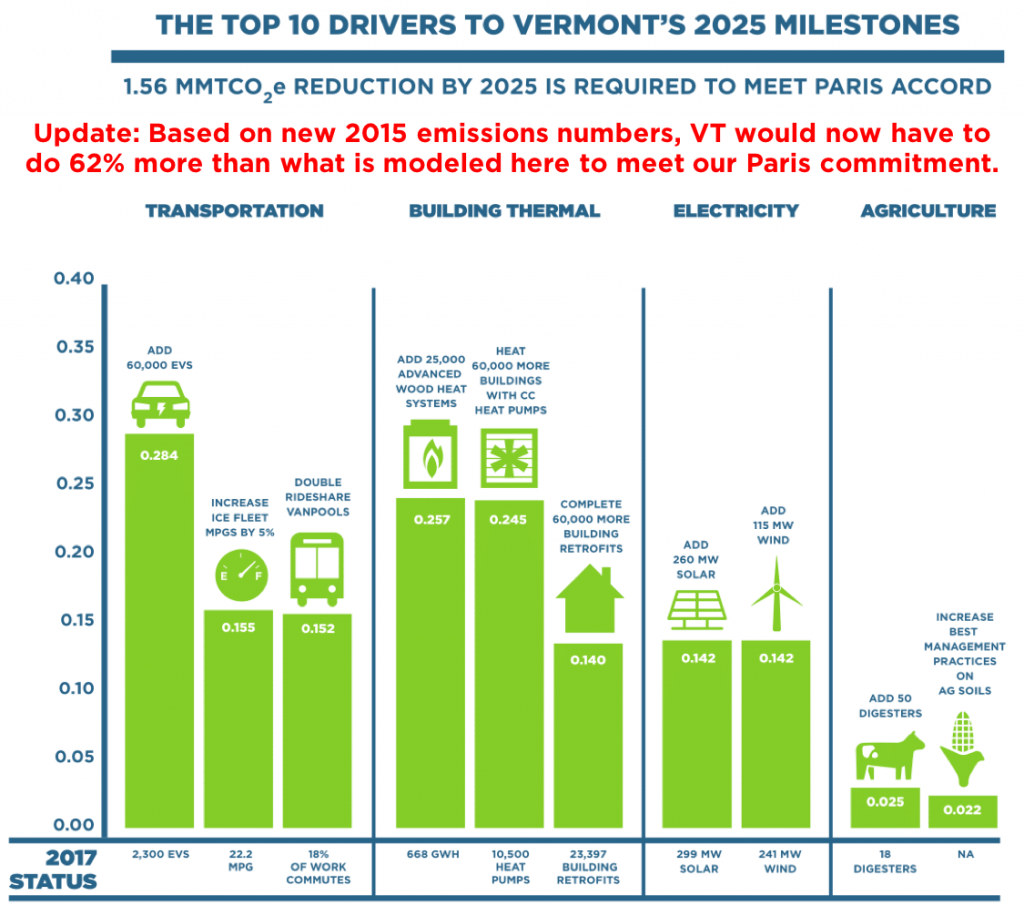Vermont is committed to energy and climate goals by 2025.
Vermont joined a bipartisan coalition of states committed to adhering to the Paris Accord goals of reducing greenhouse gas emissions (GHG) 26-28% by 2025.3 In addition, Vermont has its own statutory goal that aims for further reductions.4 Progress means bending the curve to reverse recent trends that show an increase in GHG emissions (MMTCO2e – million metric tons of CO2 equivalent).
Energy is the biggest source of climate pollution in Vermont.

Vermont’s Comprehensive Energy Plan (CEP) underscores the central role that energy plays in reducing GHG emissions. 80% of Vermont’s GHG emissions come from energy. Transportation and thermal (primarily heating) are the two largest contributors (70%).6
Vermont’s energy is not as renewable as you might think.

Although Vermont’s electricity sector is becoming significantly more renewable (43%), electricity is only 27% of Vermont’s total energy use. Vermont is only 20% renewable overall. It is clear that in order to reach our goals, we need to focus on the transportation and thermal sectors.7 Even if Vermont meets its statutory requirements for renewable electricity (67% renewable in 2025, as mandated by the Renewable Energy Standard), it will not be sufficient to meet the 2025 total energy targets without significant efforts in thermal energy and transportation.
Reaching Vermont’s 2025 Milestones

The top 10 drivers to reach Vermont’s energy and climate milestones are concentrated in the transportation and thermal sectors. No single pathway or driver is sufficient. Getting to the Paris goal would require ALL of these drivers. If Vermont falls short on any one driver, it would need to compensate by making more progress with a different driver.8
3. Governor Phil Scott joined the US Climate Alliance in June 2017, a coalition of governors committed to adhering to the Paris Accord GHG reduction goals.
4 Vermont’s statute 10 V.S.A. 578 (a) (2005) calls on Vermont to reduce its GHG emissions within and from outside the State’s boundaries caused by the use of energy within the state by 50% by 2028, and if feasible by 75% by 2050.
5 1 MMTCO2 is the equivalent of 216,000 gas-powered passenger cars not driven for a year.
6 EAN calculations using 2017 Greenhouse Gas Emissions Report (VT Agency of Natural Resources).
7 All data comes from EAN calculations based on EIA, PSD, and VTRANS sources. The sectoral pie charts reflect the calculations used for VT’s Comprehensive Energy Plan (Public Service Dept). Electricity is calculated using Source Energy which takes into account efficiency and transmission losses that occur when converting energy sources (primarily fossil fuels) to electricity and bringing it to Vermont. Transportation and thermal are calculated using “Site Energy”, which does not take these losses into account.
8 ibid. EAN calculated the top 10 drivers to reach Paris goals based on relative GHG emissions reductions (Million Metric Tons – MMTCO2e).